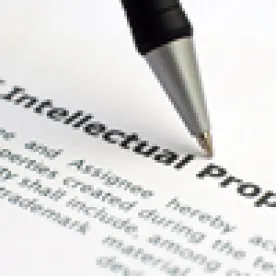Given the large cluster of technology companies in Silicon Valley, the Northern District of California has long been a top venue for patent infringement litigation. In December 2000, that court adopted its Patent Local Rules, mandating early disclosure by the parties of their infringement and invalidity contentions followed by the orderly identification of claim terms and phrases requiring construction by the court, providing a relatively early claim construction proceeding (i.e., Markman hearing), and dictating the timing of expert reports.
The N.D. Cal. Patent Local Rules introduced a significant innovation in patent infringement case management. The Eastern District of Texas borrowed heavily from the rules in crafting its own patent local rules, and other districts followed. Today, 32 or so districts have patent local rules. Of the top ten venues for patent infringement cases, only the Central District of California and Southern District of Florida lack such rules.
The Northern District of California has amended its Patent Local Rules from time to time. Through its most recent amendments, effective January 17, 2017, damages contentions now join infringement and invalidity contentions as the subject of early, detailed disclosure. The principal changes are:
-
The parties must now provide a “non-binding, good faith estimate” in the Joint Case Management Statement regarding the range of damages expected and an explanation of the estimate. Pat. L.R. 2-1(b)(5).
-
The patent owner(s) must add to its Disclosure of Asserted Claims and Infringement Contentions “the timing of the point of first infringement, the start of claimed damages, and the end of claimed damages.” Pat. L.R. 3-1(h).
-
To its production accompanying the Disclosure of Asserted Claims and Infringement Contentions, the patent owner must now add licenses and other documents bearing on the reasonable royalty calculation under Georgia-Pacific; any other agreements bearing on the party’s damages case; documents sufficient to show marking when relevant; and documents relating to any FRAND commitment regarding the asserted patent(s). Pat. L.R. 3-2(f)-(j). And the accused infringer(s) must now add to the production accompanying its invalidity contentions agreements comparable to a license that would result from a hypothetical reasonable royalty negotiation, documents showing sales, revenue, costs and profits regarding the accused instrumentalities for the period of alleged infringement, and documents used to support the accused infringer’s damages case. Pat. L.R. 3-4(c)-(e).
-
The biggest changes come in Pat. L.R. 3-8 and 3-9. The former requires the patent owner(s) to serve detailed Damages Contentions not later than 50 days following service of the accused infringer’s Invalidity Contentions. The latter requires that the accused infringer serve its Responsive Damages Contentions thirty days later.
The relatively slow pace of document productions in larger patent cases will likely make complying with these requirements a challenge, at least for a while. The compulsory production requirements of Pat. L.R. 3-2 and 3-4 should help speed compliance. And the timing requirements of Pat. L.R. 3-8 and 3-9 should provide ample support for early pressure to complete damages document productions to the extent possible in advance of those new deadlines.
The new amendments will impact patent litigation practice in at least three important ways. First, patent owners will be compelled to focus on disclosure of their damages case earlier than many now do; best practice suggests articulating at least an outline of one’s damages case before filing suit. Second, accused infringers will be compelled to divulge key sales and related information much earlier than is typical. For tactical reasons, accused infringers often prefer to keep information about potential damages close to the vest in earlier stages, particularly in cases against patent assertion entities (PAEs). And third, putting such information into each side’s hands at an early stage will affect the timing and perhaps conduct of settlement discussions. An early disclosure that potential damages in a case are relatively modest may promote earlier settlement. An early disclosure of potentially large damages, however, may have the opposite effect.




 />i
/>i

